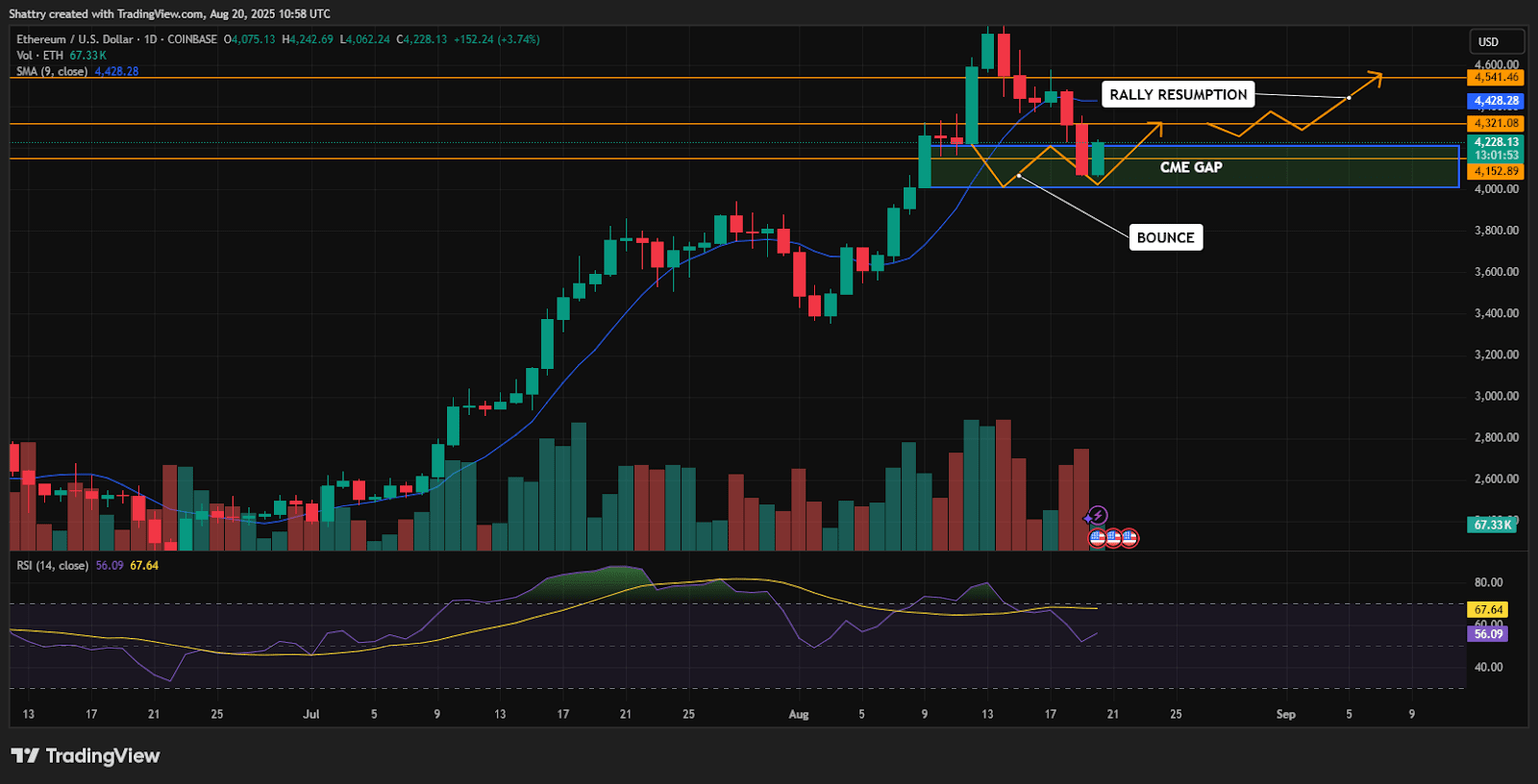Due to rebound uncertainty, BlackRock, Fidelity, and Grayscale sold ETH worth $4,063 million, triggering a $172.9 million liquidation as Ethereum plummeted to $422 million.

In a massive liquidation, Ethereum's price plummeted to $4,063, with ETF giants BlackRock, Fidelity, and Grayscale selling over $422 million worth of Ethereum within 24 hours.
The drastic sell-off left ETH bulls in turmoil, with many questioning whether this marks the end of Ethereum's impressive 200% surge that attracted investors in recent months.
Data from SoSoValue shows that the outflow on August 19 was the third consecutive trading day of poor performance for these ETFs, marking the second-largest single-day outflow since their listing.
The sharp drop in Ethereum's price has made it harder for traders to get Rekt compared to Bitcoin.
Fidelity led the way with an outflow of $156.32 million, while Grayscale contributed $122.05 million and additionally contributed $88.53 million through its dual-fund issuance.
Bitwise recorded $39.8 million in redemptions, as smaller participants, including VanEck and Franklin Templeton, recorded more modest outflows ranging from $3.03 million to $6.29 million.
During these three days of stagnation, these funds lost a total of approximately $678 million.
These massive capital outflows reversed a month-long trend of positive inflows and Ethereum accumulation by these large firms, occurring alongside broader market weakness that undermined ETH momentum.
After Ethereum recently reached a local peak near $4,800, the cryptocurrency experienced a significant rejection before testing the $4,063 support level.
However, as of the time of writing, its price had rebounded to around $4,223.
Nevertheless, as centralized exchanges like Binance continue to aggressively sell ETH to force the liquidation of leveraged long positions, potential weakness remains.
The selling pressure led to Ethereum recording its highest liquidation volume in the past 24 hours, with losses exceeding $172.9 million, which is $70 million more than Bitcoin's liquidation volume during the same period.
This chain reaction intensified retail panic, with long position holders suffering approximately $127 million in losses during yesterday's trading session alone.
Data from Lookonchain shows that a well-known trader held a long ETH position but was liquidated during the market crash, resulting in a devastating loss of $6.22 million.
The trader significantly grew an initial investment of $125,000 to a peak of $43 million during the market low in April, but surrendered four months of gains in just two trading days.
The liquidation event triggered more whale selling, as data from Arkham Intelligence showed that three major holders collectively disposed of $148 million worth of Ethereum yesterday, exacerbating the overall market sell-off.
Tom Lee's Bitimine $220M Ethereum purchase signals continued upside.
However, corporate Ethereum bonds like Tom Lee's Bitmine have become reverse buyers, stepping in to buy on dips.
During yesterday's sell-off frenzy, Bitmine acquired 52,475 ETH (worth $220 million), expanding its total Ethereum reserves to 1,575,848 ETH (valued at approximately $6.6 billion).
This strategic accumulation follows insights from Bitmine Chairman and Fundstrat Capital CIO Tom Lee, who predicts that Ethereum will drop to $4,075, providing an attractive buying opportunity before rebounding to over $5,000.
MN Fund macroeconomist and CIO Michaël van de Poppe also shared Lee's optimistic outlook, believing that the $4,000-$4,200 range represents an ideal accumulation zone for ETH, followed by a potential 10% rebound leading to new historical highs.
Ethereum Technical Collapse: Will the $4,150 support hold under pressure or break?
From a technical perspective, the ETHUSD daily chart shows that the price recently fell, filling the gap in the $4,150-$4,200 range, where it found strong support and rebounded.
The structure indicates that this area is now a key demand zone, reinforced by rejection wicks and new buying pressure.
The 9-day moving average of $4,428 is a resistance level above, and a daily close above this level will confirm that momentum will turn bullish again.

The RSI has rebounded from near neutral levels and is climbing again, showing that the strength is continuously increasing but is not overbought.
If the price stays above $4,150, the next logical move is towards the $4,430-$4,540 resistance zone, and a breakout above that level could restore a larger rebound, possibly extending to $4,600 and beyond.
Conversely, a loss of 4,150 points would weaken this bullish setup and expose downside risk towards 4,000 points.
Overall, as long as the rebound holds, the bias will remain upward.
